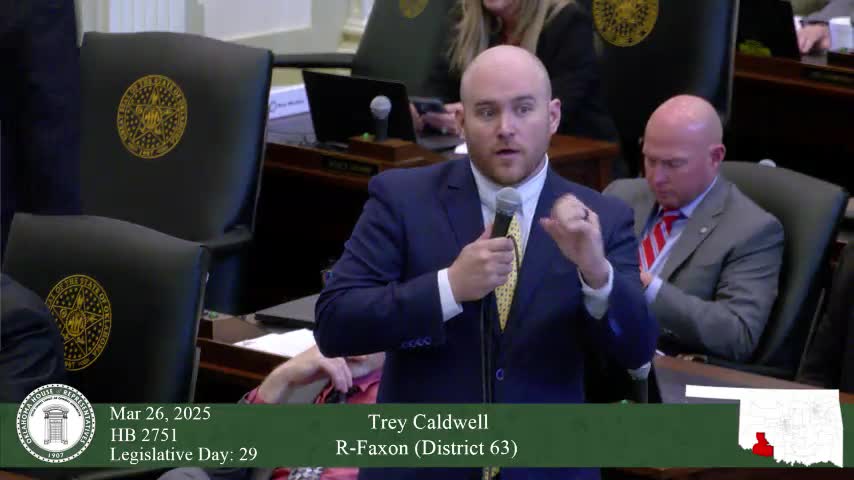Oklahoma legislators finalize wind turbine setback regulations amid property rights debate
March 26, 2025 | 2025 Legislature OK, Oklahoma
This article was created by AI summarizing key points discussed. AI makes mistakes, so for full details and context, please refer to the video of the full meeting. Please report any errors so we can fix them. Report an error »

During a recent meeting of the Oklahoma House of Representatives, lawmakers discussed significant changes to wind energy regulations that could reshape the landscape for future wind turbine projects in the state. The proposed legislation aims to establish new setback requirements for wind turbines, ensuring they are positioned a safe distance from homes and property lines, while also addressing existing contracts and property rights.
Key provisions of the bill clarify that existing contracts for wind energy projects will remain valid, meaning that current wind turbines will not be affected by the new regulations. However, any new contracts signed after the bill becomes law will need to comply with the new setback requirements. This includes a stipulation that if a project has been in the interconnection queue for over three years, construction must begin within 12 months to avoid being subject to the new provisions.
The discussions highlighted the balance between property rights for landowners wishing to install wind turbines and the rights of neighboring property owners. Lawmakers emphasized the importance of being "good neighbors" and ensuring that new developments do not infringe on the rights of those living nearby. The bill aims to address safety concerns and property rights without outright banning wind energy projects.
In addition to the setback requirements, the bill also considers the economic implications of wind energy production in Oklahoma, particularly in areas with lower wind speeds. Lawmakers noted that federal subsidies play a significant role in making wind energy projects viable, even in less optimal locations. The conversation underscored the complexity of balancing environmental goals with economic realities in the renewable energy sector.
As the bill moves forward, it is expected to have a lasting impact on the wind energy industry in Oklahoma, shaping how future projects are developed and ensuring that community concerns are taken into account. The next steps will involve further discussions and potential amendments as lawmakers seek to finalize the legislation.
Key provisions of the bill clarify that existing contracts for wind energy projects will remain valid, meaning that current wind turbines will not be affected by the new regulations. However, any new contracts signed after the bill becomes law will need to comply with the new setback requirements. This includes a stipulation that if a project has been in the interconnection queue for over three years, construction must begin within 12 months to avoid being subject to the new provisions.
The discussions highlighted the balance between property rights for landowners wishing to install wind turbines and the rights of neighboring property owners. Lawmakers emphasized the importance of being "good neighbors" and ensuring that new developments do not infringe on the rights of those living nearby. The bill aims to address safety concerns and property rights without outright banning wind energy projects.
In addition to the setback requirements, the bill also considers the economic implications of wind energy production in Oklahoma, particularly in areas with lower wind speeds. Lawmakers noted that federal subsidies play a significant role in making wind energy projects viable, even in less optimal locations. The conversation underscored the complexity of balancing environmental goals with economic realities in the renewable energy sector.
As the bill moves forward, it is expected to have a lasting impact on the wind energy industry in Oklahoma, shaping how future projects are developed and ensuring that community concerns are taken into account. The next steps will involve further discussions and potential amendments as lawmakers seek to finalize the legislation.
View full meeting
This article is based on a recent meeting—watch the full video and explore the complete transcript for deeper insights into the discussion.
View full meeting
